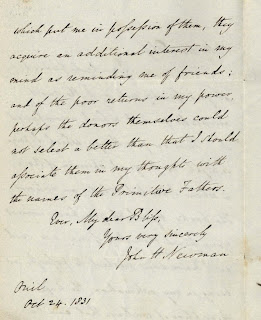 |
| Holy Hope Cemetery in Tucson, final resting place of two CSJs who died in the 1918 pandemic. |
AS WE REMEMBER
 |
| Sister M. Evangelista Wark, CSJ, d. 1918. |
Lewiston, Idaho
- March 30, 1918 – Sister Mary Rose Fee, age 32.
- October 23, 1918 – Sister Mary Evangelista Wark, age about 32.
- November 26, 1918 – Sister Mary Clement, age 24.
- January 3, 1919 – Sister Angelica Heenan, age about 30.
- January 10, 1919 – Sister Mary Joseph Godsell, age about 32.
- Nov. 27, 1919 – Sister Mary James Vanderpool,* age 17½ .
Tucson, Arizona
- January 16, 1919 – Sister Mechtilde Smith, Tucson, age 36.
- January 21, 1919 – Sister Mary Irene Bertonneau, age 32.
If we look closely, what do we notice?
- Most of the deaths occurred in a 10-month period.
- Four died within three weeks of each other.
- The sisters were young and in their prime – the prime of their lives and the prime of their religious vocations.
Eerily, in these dates, locations and ages of the sisters are the arc of a pandemic – the 1918, or Spanish, Flu. As we mentioned last time we visited this subject, it was the last major contagion to sweep the United States before the current Covid-19 outbreak and a far more devastating plague. It killed more than 50 million people around the world.
 |
| Sister Mary Rose Fee, CSJ, was the first of the Carondelet sisters to die in the pandemic. |
The disease (of the strain H1N1) probably started in the American military and came back the same way with the soldiers returning from World War I. As far as we know, the sisters who died were all nurses who contracted it from their patients and died in their own CSJ hospitals, St. Joseph’s of Lewiston and St. Joseph’s of Tucson.
The pandemic tore through the country in three or four waves between 1918 and 1920. The first sister, Mary Rose Fee, died in the first and mildest onset in early spring of 1918. Six more perished in the much deadlier second wave, which arrived in the fall of 1918 and is still notorious for killing young adults in their 20s and 30s. Finally, in an era when girls often joined the convent in their mid-teens, Sister Mary James Vanderpool had already been a sister for two years when she died in the late fall of 1919, not even 18 years old.
We sometimes forget that the Carondelet sisters of a hundred years ago lived difficult lives of inadequate food, austere living conditions, exhausting work – especially during a pandemic – and constant exposure to the sick. In their hospitals the sisters provided the best medical care the early 1900s could provide, but it was a world without ventilators, vaccinations, antibiotics, and treatments we take for granted today.
Requiescant in pace, all the sisters who sacrificed everything to care for the dear neighbor.
* The Vanderpool family lost a second daughter a year and a half after the first when Sister Mary Alphonsus Vanderpool, CSJ, died in Lewiston on June 11, 1921, at age 19. Although technically not within the period of the pandemic, she may also have been a victim of the Spanish Flu toward the end of the fourth wave. The cause of death for both sisters is listen as “pulmonary tuberculosis,” but Sister Mary James is considered to have died of the flu.
 | |||
| Death certificates for the Vanderpool sisters, Mary James and Mary Alphonsus, who died about 18 months apart. The superior at St. Joseph Hospital in Lewiston, Mother M. Adelaide, has signed both. |
 |
| St. Joseph Hospital in Lewiston in 1905. |
Sources: Necrologies of the Sisters of St. Joseph of Carondelet, Los Angeles Province; Find a Grave, St. Joseph Medical Center (Lewiston).






